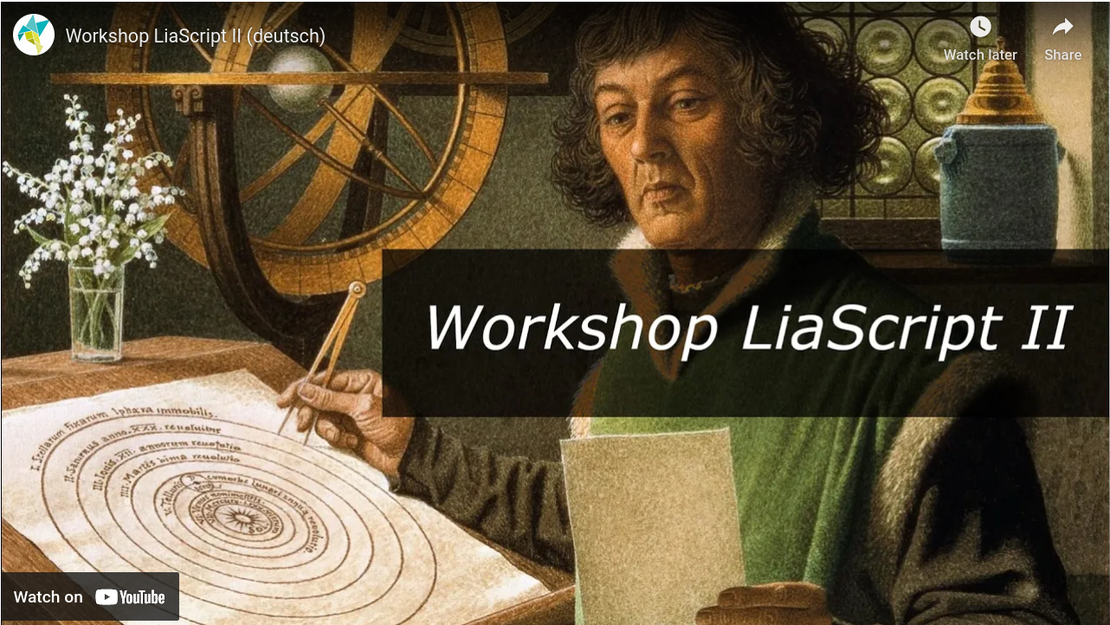
Freie Lehr-Lern-Materialien ohne Wenn und Aber II (German)
- Sebastian Zug, André Dietrich
- Tutorial , News
- June 30, 2020
Nach einer kurzen Einführung in die Konzepte werde die neusten Features von LiaScript vorgestellt, dazu zählen automatische Sprachausgaben in verschiedenen Sprachen und automatisch erstellte Visualisierungen von Markdown-Tabellen. Weiterhin wird gezeigt, was der unterschied zwischen einer PWA und einer Webseite ist …